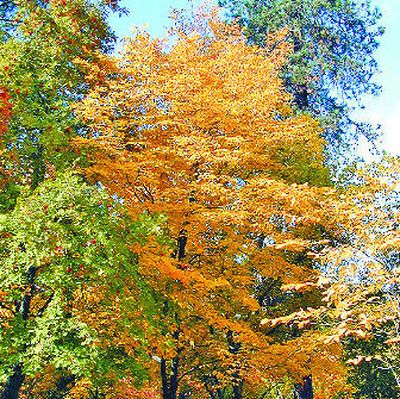Celebrate our urban forests

April has been proclaimed Urban Forest Month in Spokane to celebrate the importance of trees to our communities. Like the roads, bridges, sidewalks, power and communication wires and other gray infrastructure we rely on to keep our communities going, our green infrastructure keeps our communities healthy, livable and ultimately lower taxes for everyone.
“People need to get away from thinking of trees as an amenity,” says Carrie Anderson of Spokane’s Urban Forest Council. “They are part of our infrastructure just like streets, lights and sewers.”
According to American Forests, trees provide shade that reduces the need for air conditioning and heating by 20 to 50 percent thus reducing the use of increasingly expensive energy. Asphalt and concrete road surfaces shaded by trees can be several degrees cooler than sunny surfaces and that translates into longer road life and ultimately lower costs to taxpayers.
In an economic study done in Buffalo, N.Y., and published in 2003, a modest tree canopy cover of 12 percent (3,111 acres) removed 335,000 pounds of pollutants from the city’s air annually.
Because trees and their root systems slow the flow of storm-water runoff and allow it time to soak into the soil before it hit the storm sewers, they saved the taxpayers around $34 million in storm-water services that weren’t needed.
The simple act of caring for the trees we have and planting new ones on our own property and along our streets can yield enormous benefits for decades to come. Don’t have a tree? Adopt a neighborhood one to care for.
Caring for your trees
Water your trees deeply in the hot, dry weather of late summer and early fall. Most non-native ornamental trees in our region need water during the summer. Sprinkler systems usually don’t put out enough water to go the two feet into the ground the trees need. Set out soaker hoses and run them overnight every couple of weeks.
If your trees need pruning, call in professional arborists certified by the International Society of Arboriculture. If the people you are thinking about hiring say they will top the branches to all one level or round the tree into a ball, send them packing. This destroys the tree’s ability to grow properly.
Planting a tree
• Buy the right tree for the right place so it can grow properly. If it’s in the public right of way, check on local tree ordinances for approved varieties. In Spokane call the Construction Service Department (509-625-6300) to request a free tree work permit and an evaluation of your plans.
• Choose an open, sunny place that is easy to water and maintain
• Dig a basin-shaped hole at least three to five times the diameter of the root ball. This is a change from traditional methods used in the past to plant trees that allows the roots to expand better.
• Make the hole no deeper than the root flare on the trunk; the point at which the trunk flares out to form the roots. To find the root flare on the trunk you may need to remove soil from the root ball.
• Place the root ball in the hole and remove the top two thirds of the burlap and all of the string.
• Backfill the hole with native soil with no amendments. Tree roots planted in amended soil tend not to expand as readily and anchor the tree.
• Add water to the hole as you plant to settle soil and remove air pockets.
• Add a three-inch layer of mulch to the root area keeping it six inches away from the trunk.
• Build a ridge of soil around the planting holes to create a moat that will hold water and allow it to soak into the soil slowly.
As part of the celebrations around Urban Forest Month this year, the Spokane City Council has proclaimed three trees of the year instead of the usual one. According to Anderson, having the option of small, medium and large-sized trees would allow people to pick a tree that fit their space.
2007 Trees of the Year
Small: Amur Maackia (Maackia amurensis). A slow-growing tree with a rounded crown reaching 20 to 30 tall and wide that blooms white in July. Has unique brown to copper colored exfoliating bark that adds year-round interest.
Medium: American Yellowwood (Cladrastis lutea). A low branching tree with a broad round crown that reaches 30 to 50 feet tall and 45 feet wide. Blooms in May and June with white flowers and yellow to gold fall color. Its bright green leaves are a nice contrast to darker foliage around it.
Large: Japanese Zelkova (Zelkova serrata). A vase-shaped tree that can grow to 60 to 70 feet with a narrower spread. Noted for its fall colors that range from yellow-orange to reddish purple and striking smooth gray bark.